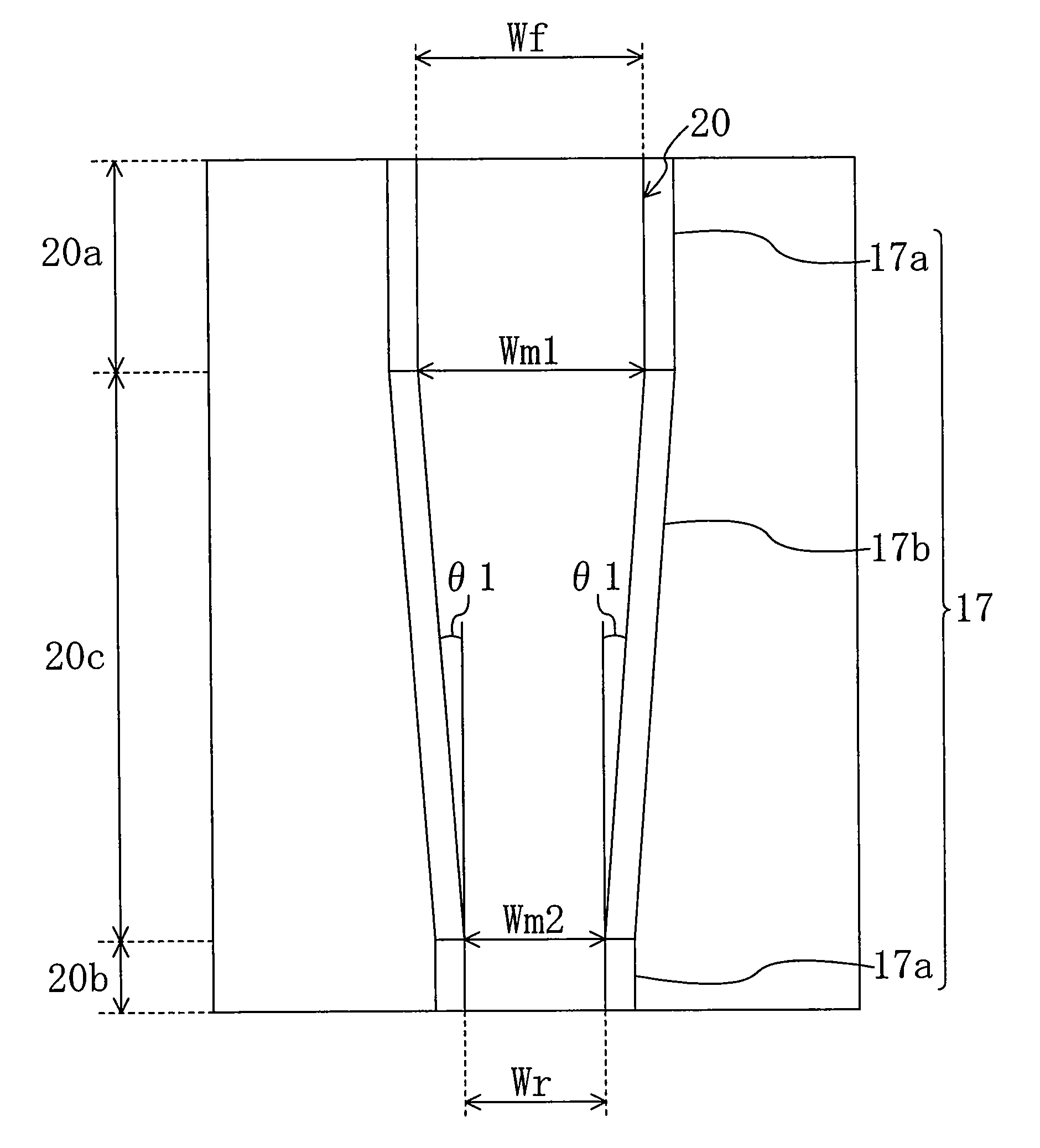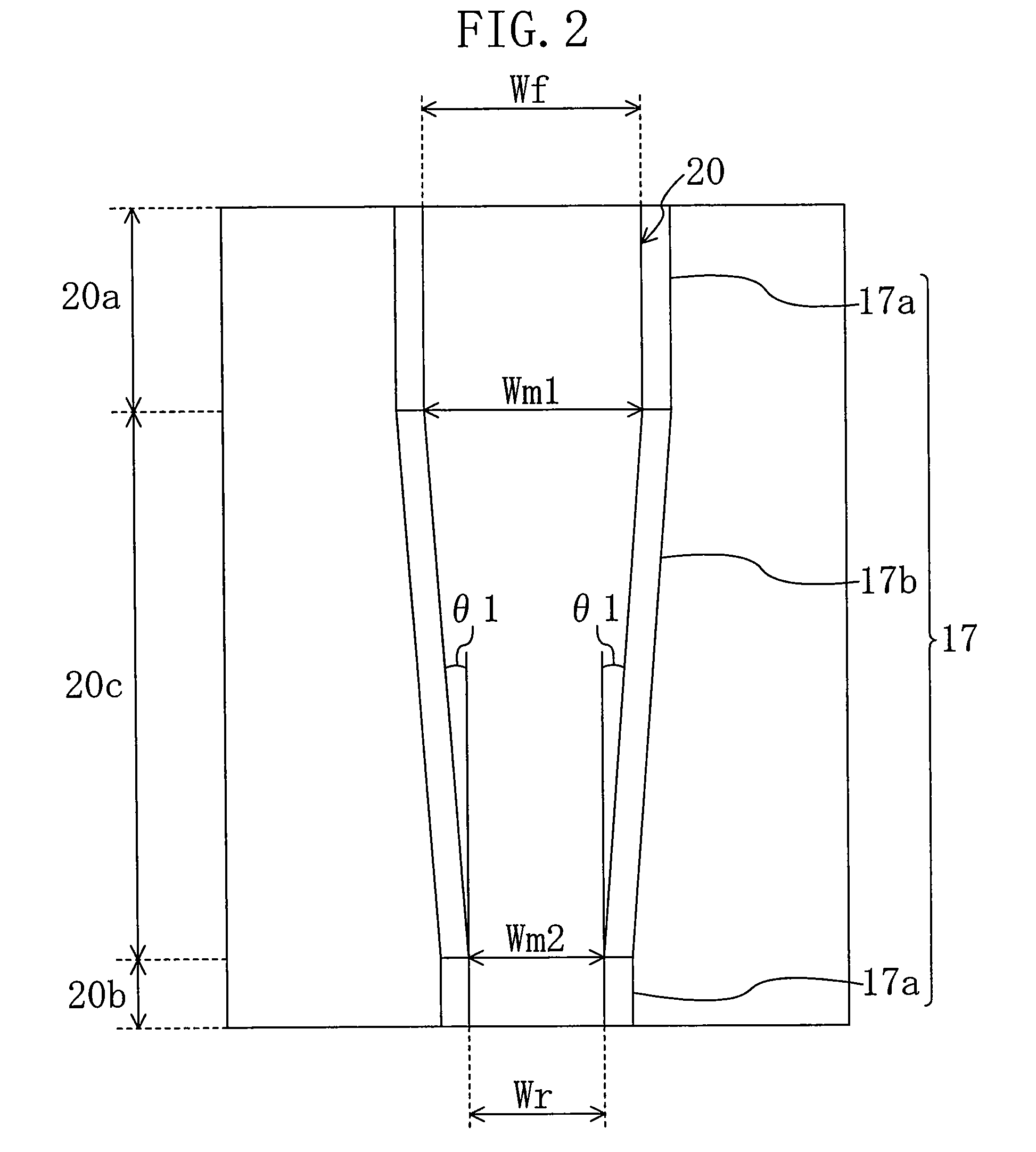Semiconductor laser device and fabrication method for the same
a laser device and semiconductor technology, applied in semiconductor lasers, laser details, electrical devices, etc., can solve the problems of increasing the oscillation threshold current, affecting the stability of the active layer, and the shortage of electron-hole pairs, so as to reduce the external differential quantum efficiency and stable fundamental transverse mode oscillation. , the effect of small decreas
- Summary
- Abstract
- Description
- Claims
- Application Information
AI Technical Summary
Benefits of technology
Problems solved by technology
Method used
Image
Examples
Embodiment Construction
[0037]Hereinafter, an embodiment of the present invention will be described with reference to the accompanying drawings. FIG. 1 is a cross-sectional view of a semiconductor laser device of this embodiment, which shows the cross-sectional configuration in a portion thereof closer to the front end face from which laser light is extracted. As shown in FIG. 1, the semiconductor laser device of this embodiment is a red laser device including a cavity structure 40 formed on a substrate 10 made of n-type GaAs having a plane tilted from (100) plane by 10° in [011] direction as the principal plane. Note that a P electrode and an N electrode are omitted in FIG. 1.
[0038]On the substrate 10, formed sequentially are a buffer layer 11 made of n-type GaAs having a thickness of 0.5 μm, a first clad layer 12 made of n-type (Al0.7Ga0.3)0.51In0.49P having a thickness of 2 μm, an active layer 13, a second clad layer 14 made of p-type (Al0.7Ga0.3)0.51In0.49P, a protection layer 15 made of p-type Ga0.51I...
PUM
 Login to View More
Login to View More Abstract
Description
Claims
Application Information
 Login to View More
Login to View More - R&D
- Intellectual Property
- Life Sciences
- Materials
- Tech Scout
- Unparalleled Data Quality
- Higher Quality Content
- 60% Fewer Hallucinations
Browse by: Latest US Patents, China's latest patents, Technical Efficacy Thesaurus, Application Domain, Technology Topic, Popular Technical Reports.
© 2025 PatSnap. All rights reserved.Legal|Privacy policy|Modern Slavery Act Transparency Statement|Sitemap|About US| Contact US: help@patsnap.com



